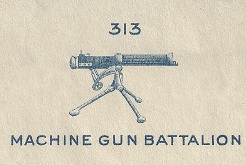Evron Jay Householder
In 1931, Albert Goldring wrote a letter to the 80th Division Service Magazine about a visit he received from his “Old Bunkie,” Henry Heuing, who went through all the “tough spots” with him during the war.
Both men served together in C Company, 313th Machine Gun Battalion, and it had been at least 12 years since they last saw each other. They were both married men with children, Heuing having three daughters, and Goldring having a daughter of his own. Perhaps a promise to meet up after the war had finally come to fruition.
The clipping reads in part, “After dinner, these men, happy to be together again, sat on the porch and the old days were recalled and relived. Again, the war was a reality - a battle of life and death. Through ‘thick and thin’ they had stuck together - again they witnessed the death of their friend Householder – saw Ben Holland bravely give his life ’that this nation might live.’ It was an exciting night – tragically interwoven with sorrow and glory. Until you have met with a friend of those days after so many years you will never realize the sensation of happy reunions.” (Service Magazine Sept-Oct 1931)
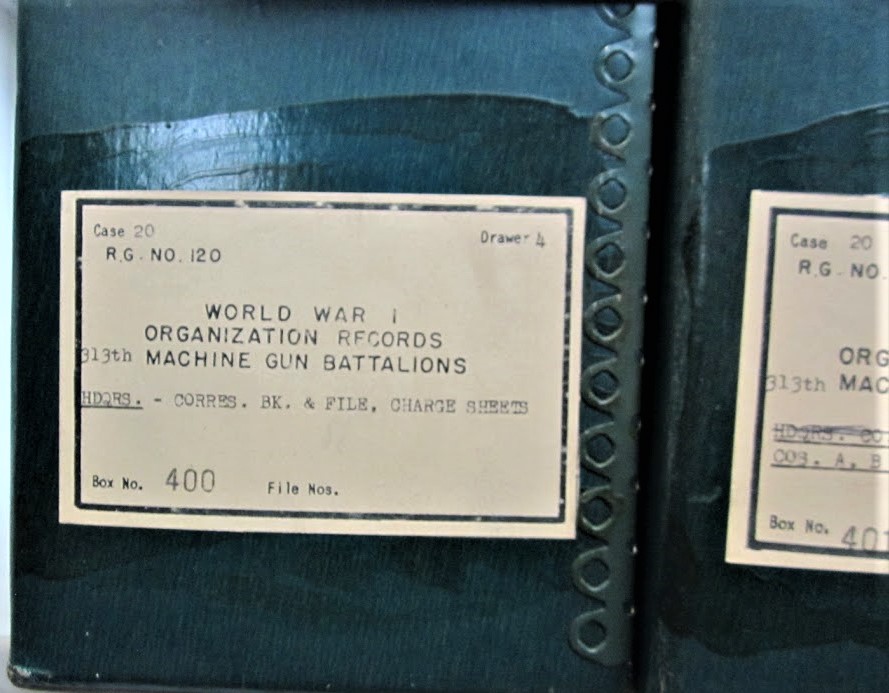
Having gone through multiple file boxes and the National Archives, and scouring online resources for names associated with the battalion during my research, I am empathetic to those who were responsible for the monumental task of trying to document all who served, especially documenting the details of those who were casualties of the Great War. As you will soon read, disseminating casualty information during this time was difficult, and I suppose just as difficult today when trying to locate complete company records. At the very least, I hope that this article will allow us to honor the memory of Evron Jay Householder, Lest We Forget.
At the time of the first national draft, June 5, 1917, Evron was 28 years old, single, and working for the Massillon-Tuscarawas Coal Company in Johnstown, Ohio. He called Dover, Ohio his home residence, located about 85 miles away for the mine in which he was working. His older brother Edgar Leroy, who went by the name Roy, also worked in this mine. With the first draft calling for men ages 21 to 30 years old, Roy then age 36, was not required to register in June. However, he would later register his name in the second national draft held in the fall of 1918.
 Evron did not claim an exemption when he initially signed his draft registration in June 1917, but by September 1917, his name appeared in the newspaper on a list of men whose claims for exemption were granted, and next to his name appeared the word “father.” It should be noted here that Evron’s father, Jacob Householder, had been ill during this time and subsequently died on August 12, 1918, while Evron was in France.
Evron did not claim an exemption when he initially signed his draft registration in June 1917, but by September 1917, his name appeared in the newspaper on a list of men whose claims for exemption were granted, and next to his name appeared the word “father.” It should be noted here that Evron’s father, Jacob Householder, had been ill during this time and subsequently died on August 12, 1918, while Evron was in France.
By February 1918, Evron’s name appeared again in the newspaper with other men whose exemption claims were rejected. Two months later, on April 29, 1918, Evron was inducted into the National Army and would leave New Philadelphia, OH with 49 other men heading for Camp Sherman, located outside of Chillicothe, OH. Before leaving, a prayer was offered by Rev. W. D. Ward, and he was quoted as saying, “The call which has been made upon you is one to hardship, service and the highest cause for humanity ever known. The call is more than a call for the defense of your country. You are to fight for something greater than the freedom of the world or the defeat of Germany. You are giving your lives in supreme sacrifice to the cause of humanity.”
Evron Jay Householder would receive his initial Army training with the 11th Company, 313th Training Battalion, 150th Brigade until he was given a more specific military role to be trained as a machine gunner. On May 4, 1918, Evron was transferred to A Company, 322nd Machine Gun Battalion, 82nd Division. His unit left New York City, headed for England, aboard the SS Olympic on June 14, 1918, just over a year from the day he initially signed his draft registration card. He was now 29 years old.
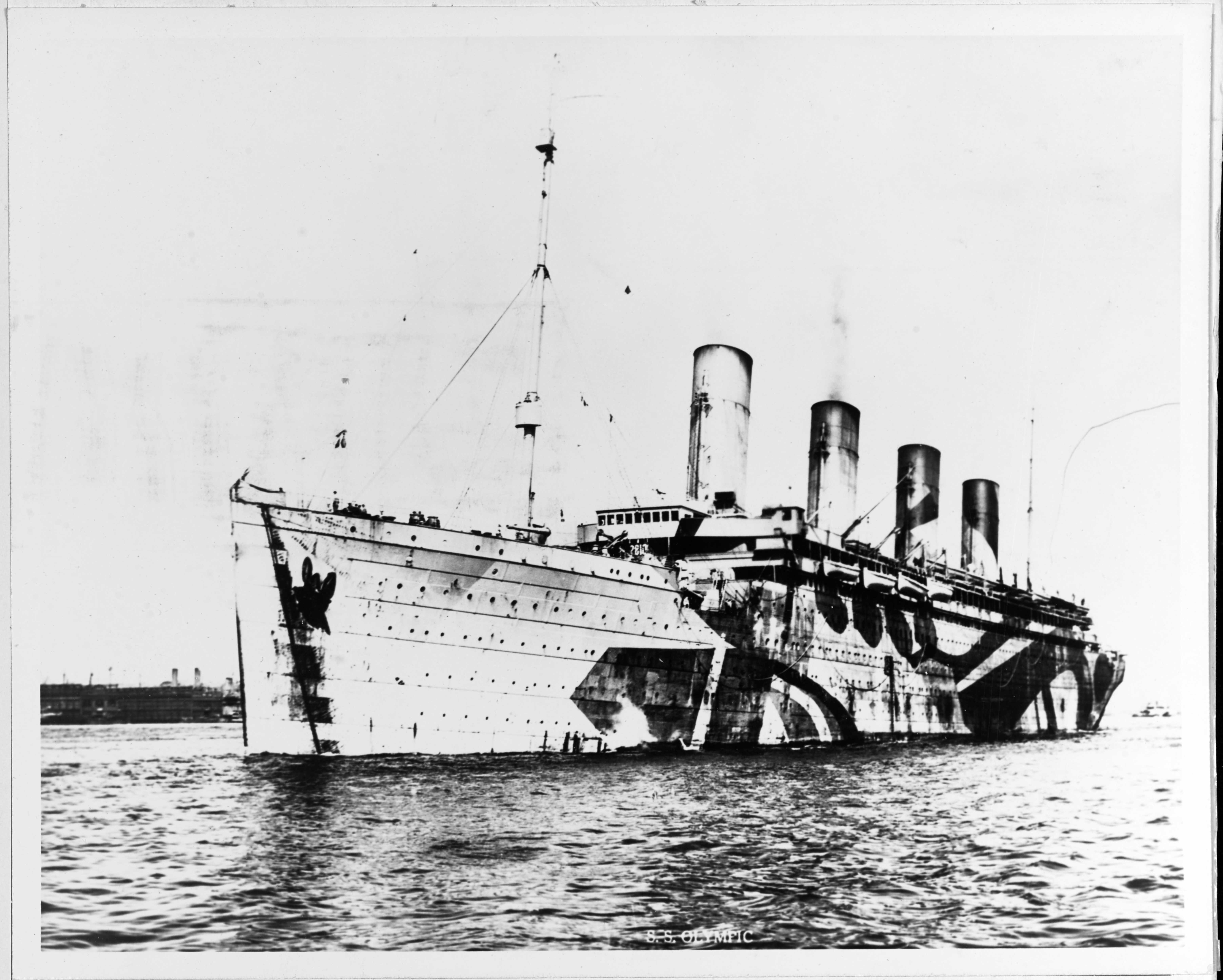
Once overseas, Evron wrote a letter to his brother that appeared in the newspaper, “I was tired of riding till I arrived here, but never got a bit sick on the ocean. Things don’t look the same on this side as they do back in the U.S.A. The engines and cars on the railroads are small compared with ours. I saw some nice scenery on the way.”
It’s not clear how or when he was transported from England to France, but he was eventually transferred out of the 82nd Division and attached with the 80th Division. Records show that Householder was assigned to C Company of the 313th Machine Gun Battalion on August 2, 1918. At the time of the assignment, C company was billeting in Doullens, France and had not yet seen the frontlines. From this point on in the war, Private Householder was attached to C Company.
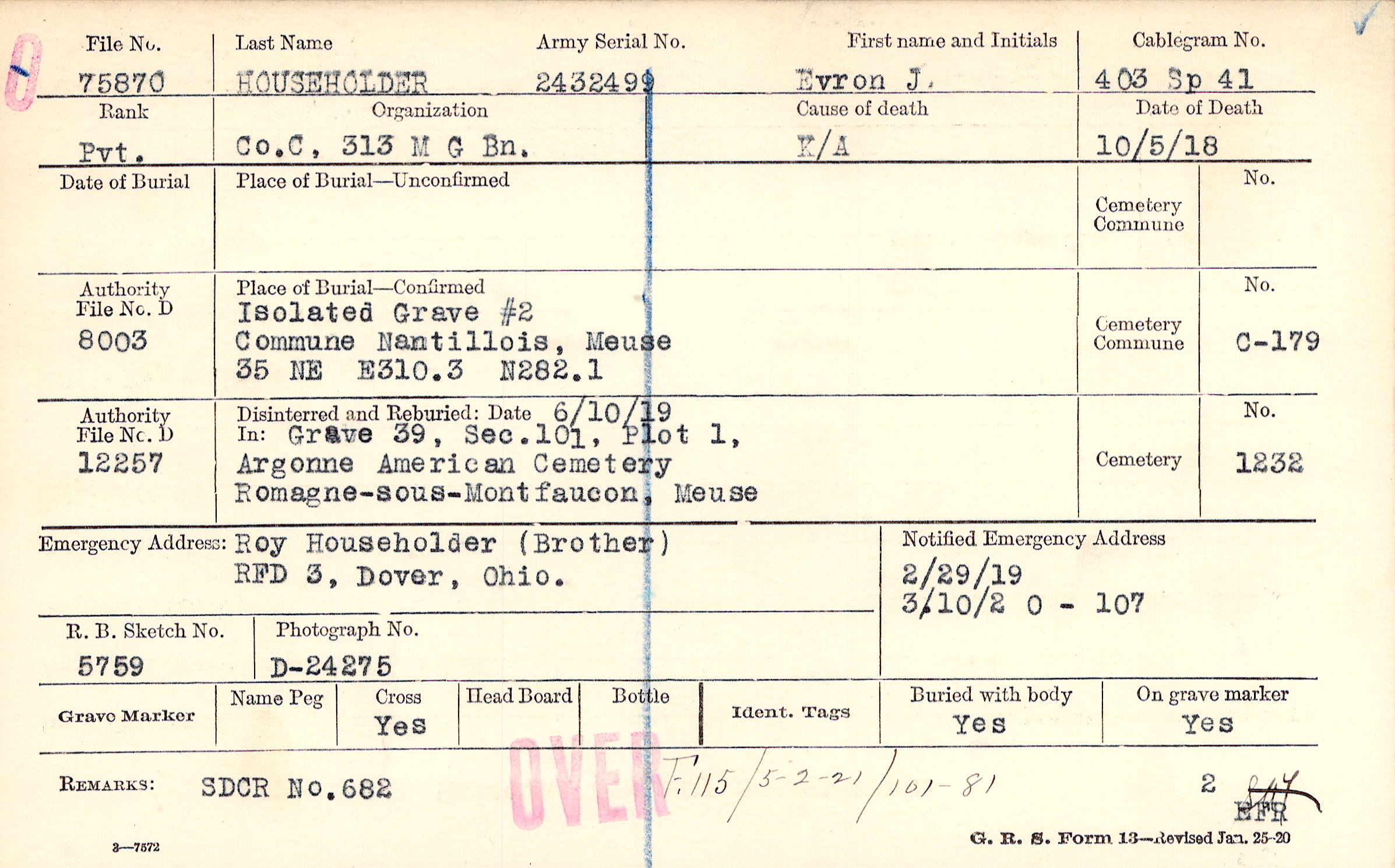
Records show that his death occurred on October 5, 1918, during the Meuse-Argonne offensive. His body was placed in an isolated grave in the commune of Nantillois. The burial plot map for this “Isolated Grave #2” has not been imaged by the National Archives. He was later disinterred from this grave and reburied in the Meuse-Argonne American Cemetery on June 10, 1919, two years after he signed his draft registration card.

Further research would be necessary to examine the contradictory news given to Roy Householder after Evron was killed, as well as the date that Roy actually received confirmation of his brother’s death. Roy was listed as the family emergency contact, and on November 14, 1918, at least two newspapers listed Evron as “Missing in Action,” and one paper listed him as “Wounded, Degree Undetermined.” The New Philadelphia Daily Times reported that “Evron J. Householder, Johnstown boy reported missing in action to his brother, Roy Householder, has been found in a hospital recovering from wounds received in action.” How or why Roy was given this information is not clear, but it was not true.
At the request of his family, the remains of Evron Jay Householder were disinterred from the Meuse-Argonne American Cemetery and were transported back to the United States. His body was placed aboard the USS Wheaton and left Antwerp, Belgium on September 20, 1921. His remains were received in Hoboken, New Jersey and transported to his final resting place in the New Cumberland Cemetery, Tuscarawas County, Ohio.
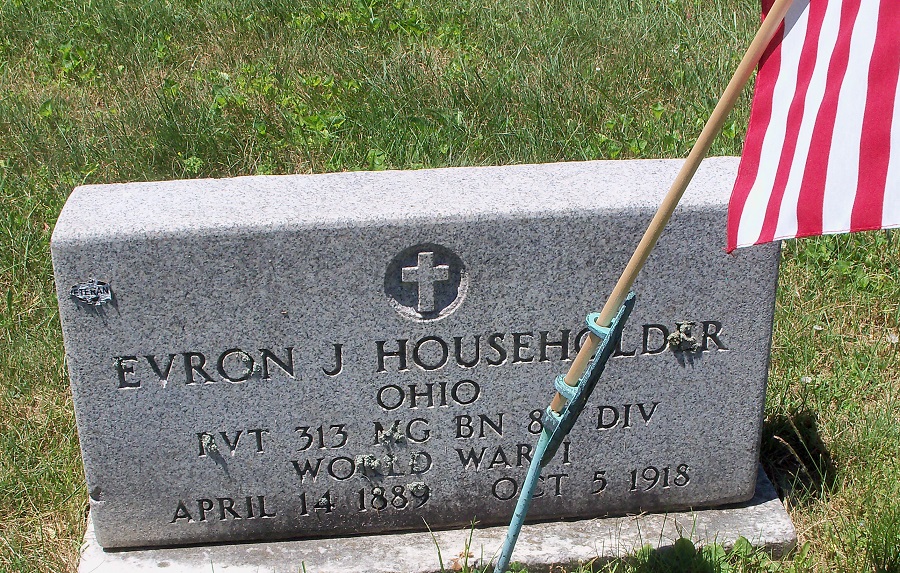
Photo credits:
Circa 1910 photo of Evron and Roy Householder posted to Ancestry by member plra56 originally shared on 08 Mar 2013.
SS Olympic: Ancestry.com. U.S., WWI Troop Transport Ships, 1918-1919 [database on-line]. Lehi, UT, USA: Ancestry.com Operations, Inc., 2017.
Burial Card: National Archives RG 92 Card Register of Burials of Deceased American Soldiers.
Newspaper clipping: "News Items of Ten Years Ago," The Daily Times, New Philadelphia, Ohio,15 Nov 1928, Page 2.
Headstone: Added to Findagrave.com by Jon Papai on 15 Jun 2016.
